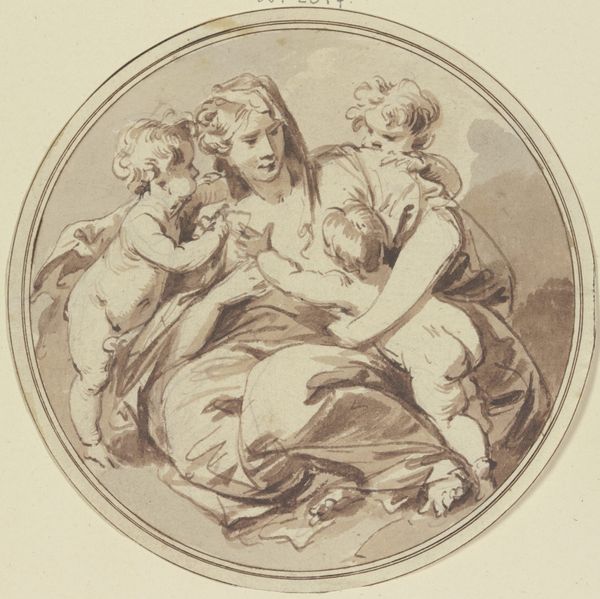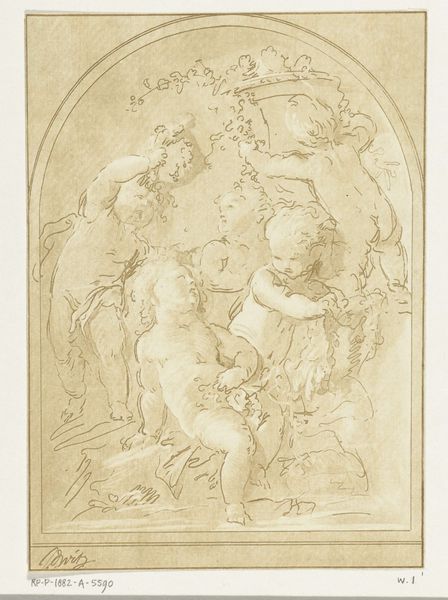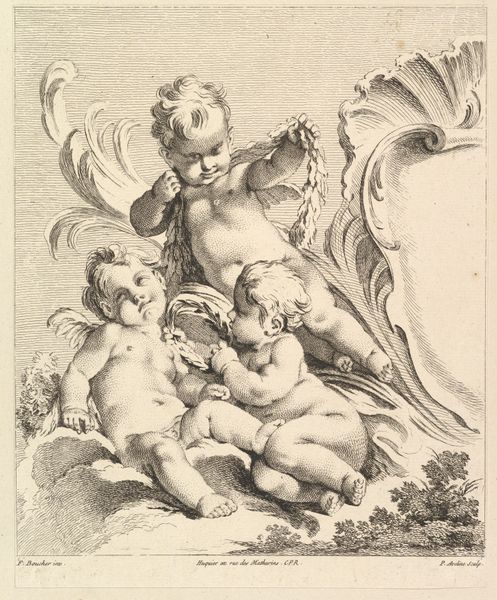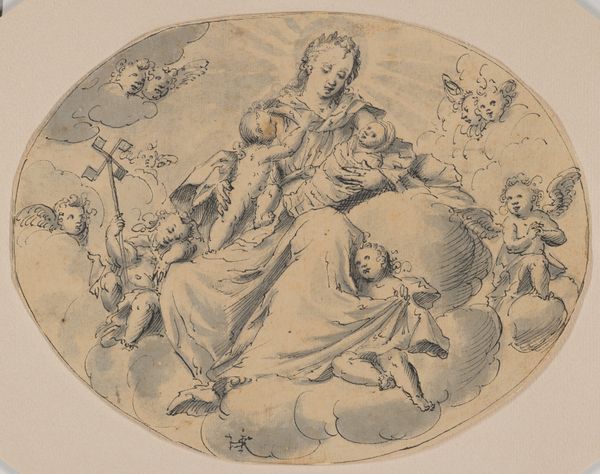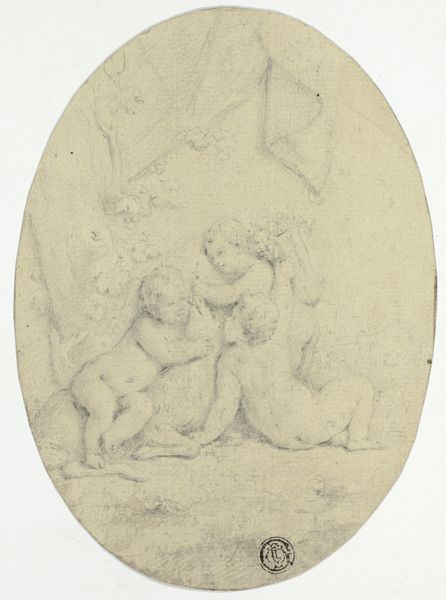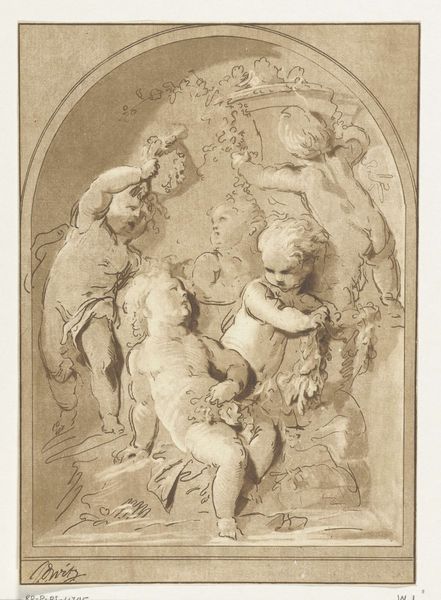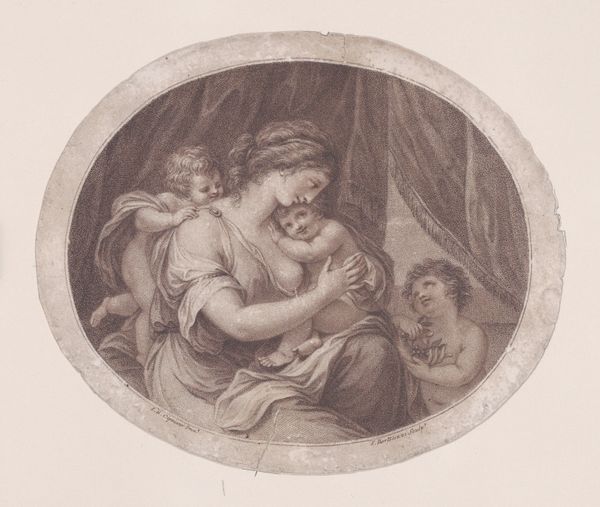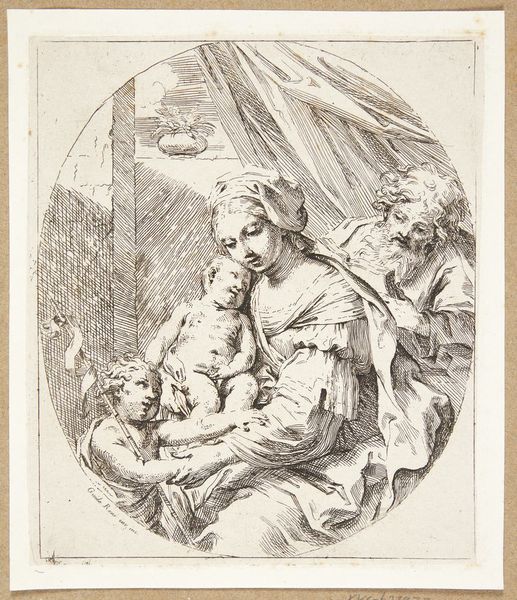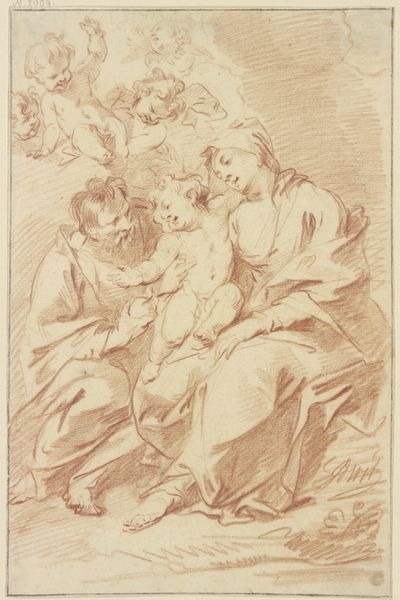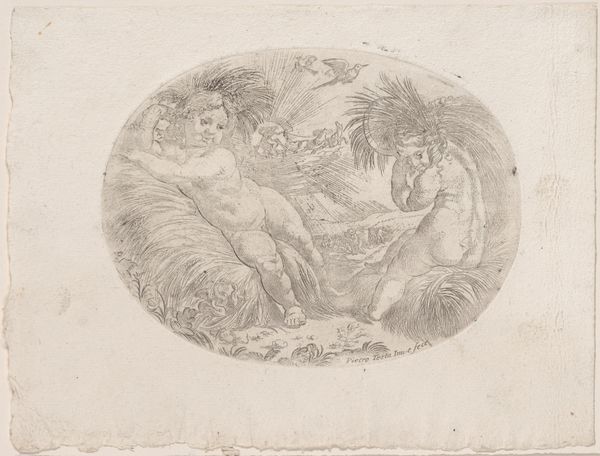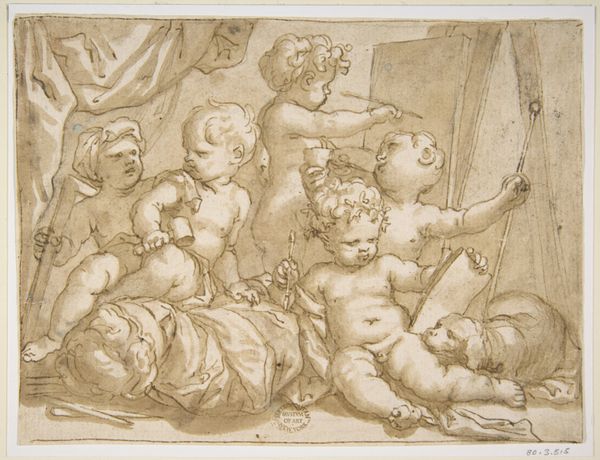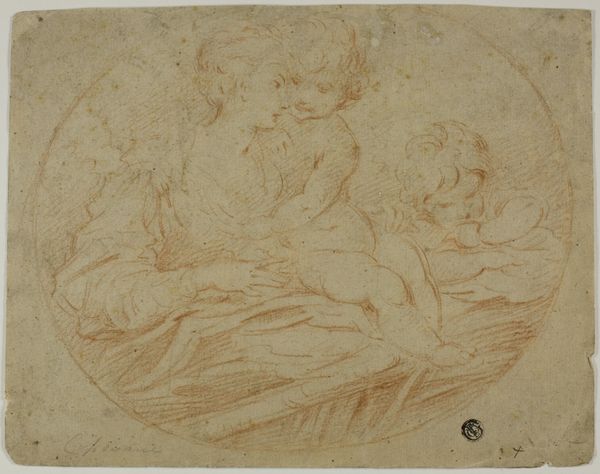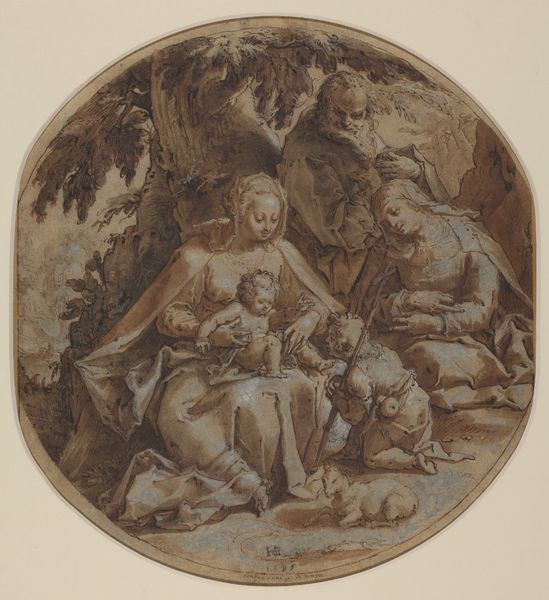
The Madonna with the Christ Child, with the infant John the Baptist and another Child 1595 - 1605
0:00
0:00
drawing, pencil
#
portrait
#
drawing
#
figuration
#
pencil
#
italian-renaissance
Copyright: Public Domain: Artvee
Curator: Looking at this tender scene, what strikes you most immediately? Editor: The vulnerability, definitely. The exposed breast, the unguarded poses of the children—there's an almost unsettling intimacy despite the classical subject matter. Curator: Absolutely. We're looking at a work titled "The Madonna with the Christ Child, with the infant John the Baptist and another Child" by Abraham Bloemaert, likely created between 1595 and 1605. What’s fascinating is the use of materials; this drawing in pencil offers us insight into the labor involved, it's not grand pronouncements, but skilled work that resulted in this image of grace. Editor: And there’s something decidedly unfussy in Bloemaert’s technique, particularly if you consider that we are meant to venerate Mary, her representation resists glorification in favor of tenderness. Is that deliberate? Curator: Bloemaert was deeply involved in exploring Counter-Reformation themes, he’s exploring motherhood as a vehicle for empathy and spiritual connection; his interest wasn't merely surface-level aesthetics but aimed at engaging viewers on a personal, emotional level. He's showing her nurturing physically in this intersectional approach to motherhood and the divine. Editor: Thinking about the social context and religious mandate, it feels significant to notice the raw process on display, with these subtle pencil marks—drawing as devotional act and product of workshop activity, merging the sacred and the secular. It's a piece that reflects the means and conditions under which it was made. Curator: It's a valuable reminder to look beyond just the religious subject and explore what art and faith truly meant to people navigating historical currents and labor relations. Editor: Precisely. The drawing’s physical existence—the labor, the medium—offers a new viewpoint beyond idealized Madonnas; it gives space to lived experience through which meaning takes shape in our world. Curator: I see it also through that prism: to see it as Bloemaert positioning this idealization inside real life—not excluding difficult and real circumstances surrounding it. Editor: I agree. This exploration into Bloemaert's creative practice and our discussion highlights how both process and representation carry significant weight. Thank you for this insight. Curator: A meaningful intersection, and thank you too.
Comments
No comments
Be the first to comment and join the conversation on the ultimate creative platform.
